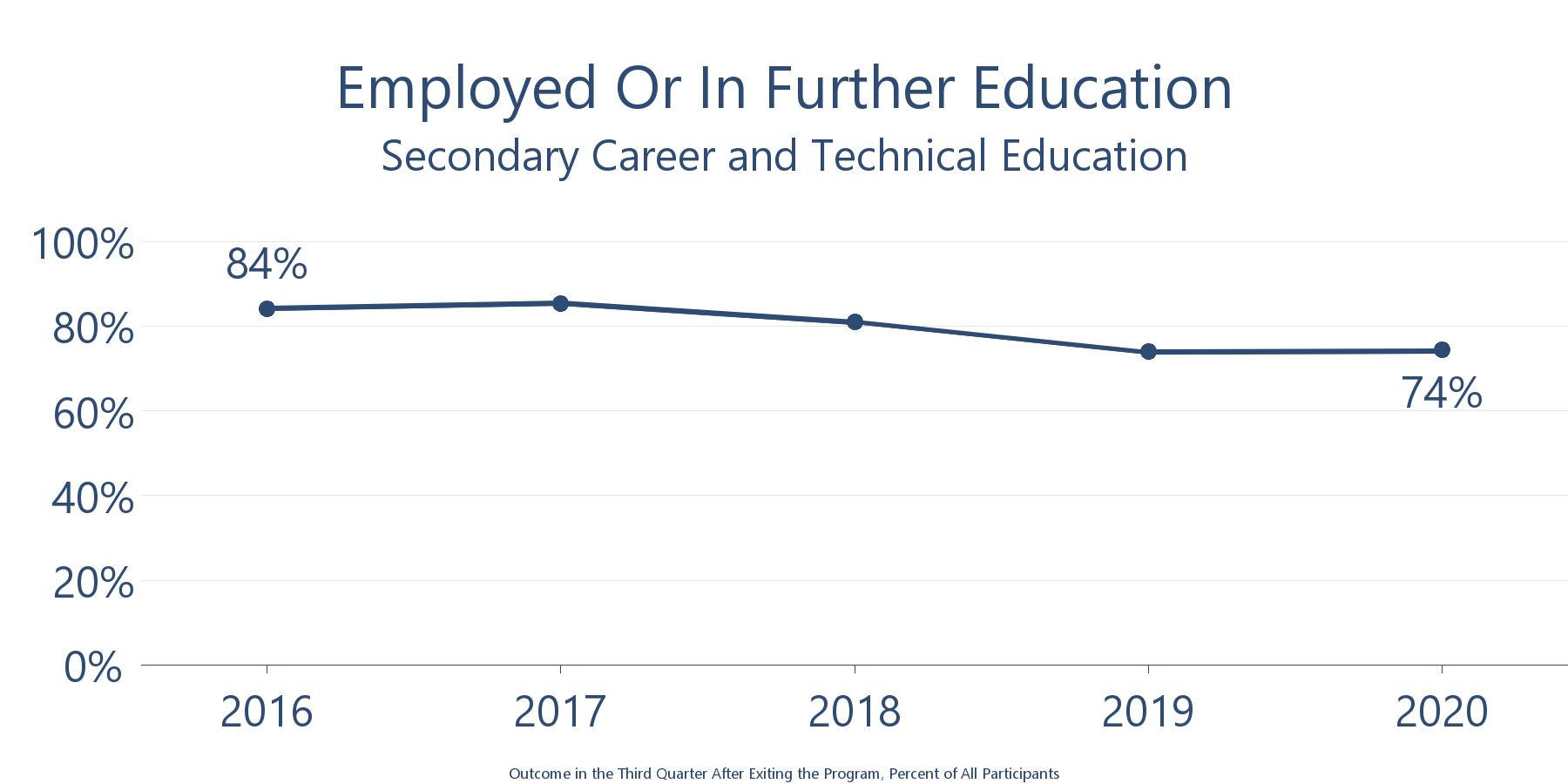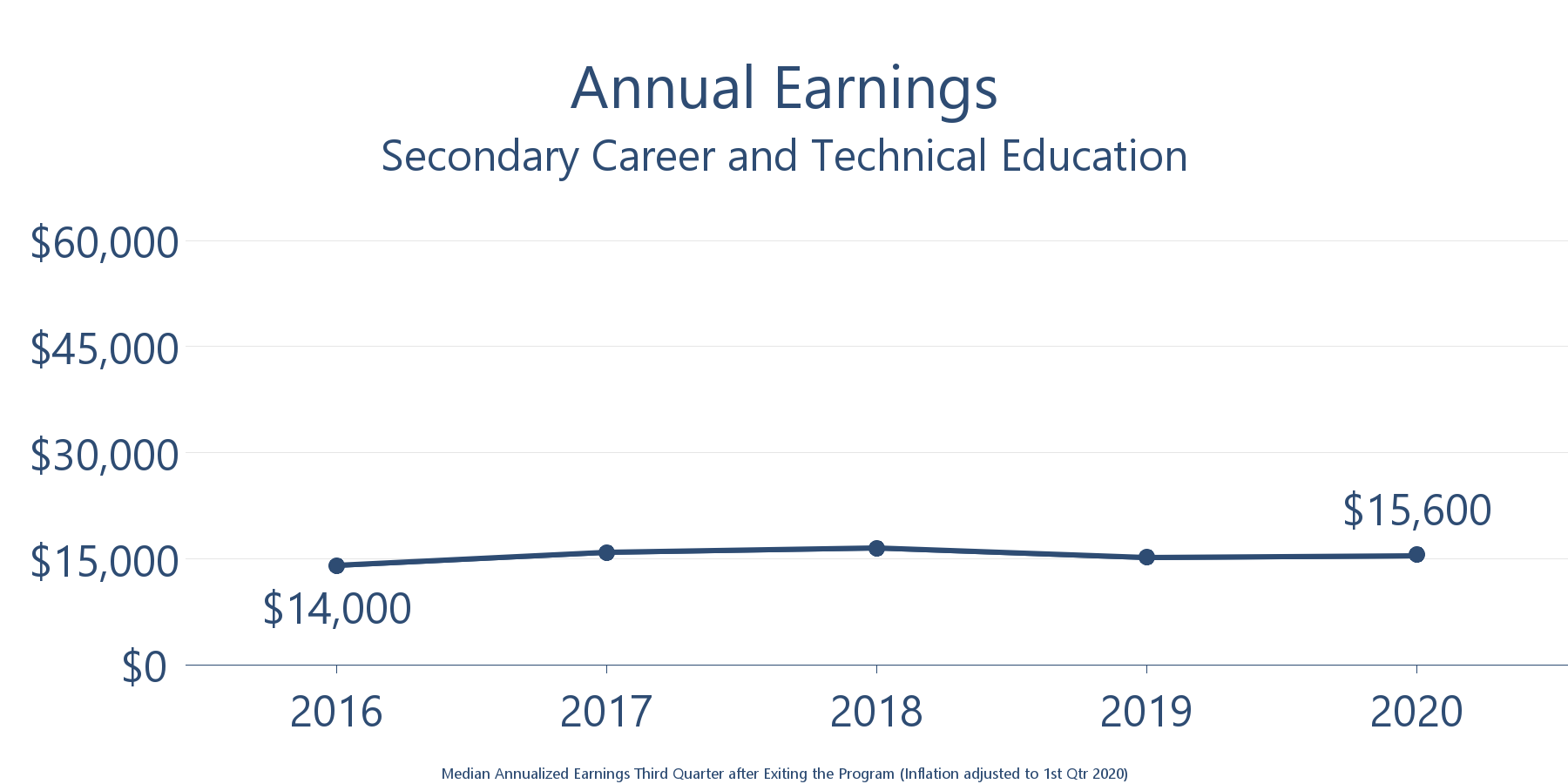Secondary Career and Technical Education (CTE)
Career and technical education helps prepare students for successful roles in families, careers, and communities. Programs are designed to develop the skills, understanding, and attitudes needed by workers in their occupations. Instructional programs organized within career pathways include agriculture, family and consumer sciences, trade and industry, marketing education, business education, diversified occupations, technology education, cosmetology, health education, and others.
State Core Indicator Results
*CTE results have not been updated since released in 2021. We are waiting for data and will make these changes as soon as fresh information is available.*
| Employment or Further Education Percentage of participants who were employed or continued their education, as reported to the Employment Security Department during the third quarter after leaving the program.* |
74% |
| Earnings Median annualized earnings six to nine months after leaving the program. (Quarterly earnings are the result of hourly wage rates and the number of hours worked in a calendar quarter. To derive annualized earnings, quarterly earnings are multiplied by four.) |
$15,600 |
| Skills Percentage of participants who obtained an appropriate credential. (Percentage based on all participants, including those who did not receive training through the program.) |
N/A |
| Net Participant Benefits Average additional yearly earnings plus benefits (such as health insurance, paid vacation, and sick leave). Overall benefits are calculated by subtracting tuition costs, foregone earnings while in a workforce program, reduced government assistance, and increased taxes because of higher earnings. |
N/A |
| 10-Year Economic Impact Total net economic benefit over 10 years generated by workforce programs as a result of increased employment, increased net earnings, and reduced government assistance, minus total program costs and tuition. |
N/A |
| 10-Year Taxpayer Return on Investment Net return on investment to taxpayers over 10 years from publicly funded workforce programs due to increased tax revenue resulting from increased earnings and reduced government assistance. |
N/A |
*Includes some out-of-state employment data, but not all of it. Does not include data on self-employment.


